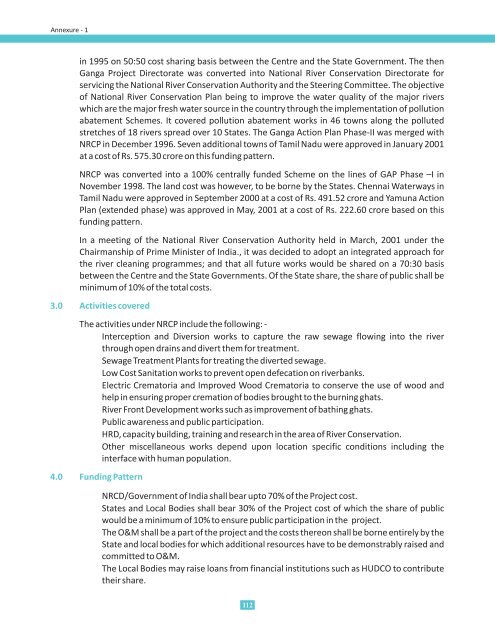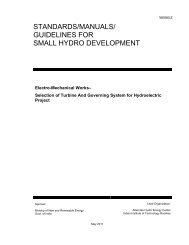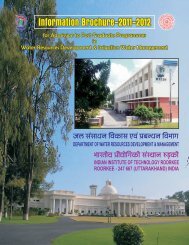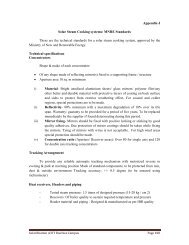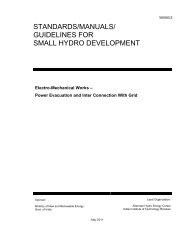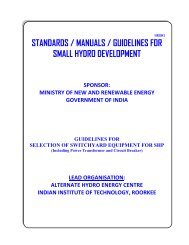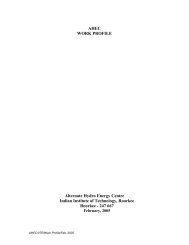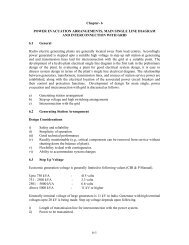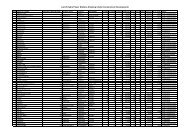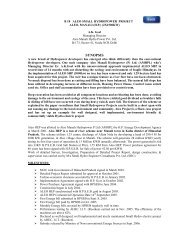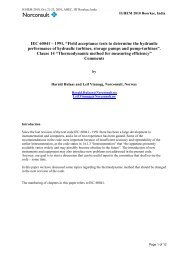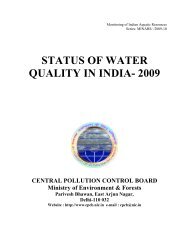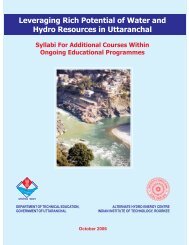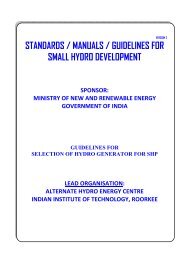annexures - Indian Institute of Technology Roorkee
annexures - Indian Institute of Technology Roorkee
annexures - Indian Institute of Technology Roorkee
You also want an ePaper? Increase the reach of your titles
YUMPU automatically turns print PDFs into web optimized ePapers that Google loves.
Annexure - 1in 1995 on 50:50 cost sharing basis between the Centre and the State Government. The thenGanga Project Directorate was converted into National River Conservation Directorate forservicing the National River Conservation Authority and the Steering Committee. The objective<strong>of</strong> National River Conservation Plan being to improve the water quality <strong>of</strong> the major riverswhich are the major fresh water source in the country through the implementation <strong>of</strong> pollutionabatement Schemes. It covered pollution abatement works in 46 towns along the pollutedstretches <strong>of</strong> 18 rivers spread over 10 States. The Ganga Action Plan Phase-II was merged withNRCP in December 1996. Seven additional towns <strong>of</strong> Tamil Nadu were approved in January 2001at a cost <strong>of</strong> Rs. 575.30 crore on this funding pattern.NRCP was converted into a 100% centrally funded Scheme on the lines <strong>of</strong> GAP Phase –I inNovember 1998. The land cost was however, to be borne by the States. Chennai Waterways inTamil Nadu were approved in September 2000 at a cost <strong>of</strong> Rs. 491.52 crore and Yamuna ActionPlan (extended phase) was approved in May, 2001 at a cost <strong>of</strong> Rs. 222.60 crore based on thisfunding pattern.In a meeting <strong>of</strong> the National River Conservation Authority held in March, 2001 under theChairmanship <strong>of</strong> Prime Minister <strong>of</strong> India., it was decided to adopt an integrated approach forthe river cleaning programmes; and that all future works would be shared on a 70:30 basisbetween the Centre and the State Governments. Of the State share, the share <strong>of</strong> public shall beminimum <strong>of</strong> 10% <strong>of</strong> the total costs.3.0 Activities coveredThe activities under NRCP include the following: - Interception and Diversion works to capture the raw sewage flowing into the riverthrough open drains and divert them for treatment. Sewage Treatment Plants for treating the diverted sewage. Low Cost Sanitation works to prevent open defecation on riverbanks. Electric Crematoria and Improved Wood Crematoria to conserve the use <strong>of</strong> wood andhelp in ensuring proper cremation <strong>of</strong> bodies brought to the burning ghats. River Front Development works such as improvement <strong>of</strong> bathing ghats. Public awareness and public participation. HRD, capacity building, training and research in the area <strong>of</strong> River Conservation. Other miscellaneous works depend upon location specific conditions including theinterface with human population.4.0 Funding PatternNRCD/Government <strong>of</strong> India shall bear upto 70% <strong>of</strong> the Project cost.States and Local Bodies shall bear 30% <strong>of</strong> the Project cost <strong>of</strong> which the share <strong>of</strong> publicwould be a minimum <strong>of</strong> 10% to ensure public participation in the project.The O&M shall be a part <strong>of</strong> the project and the costs thereon shall be borne entirely by theState and local bodies for which additional resources have to be demonstrably raised andcommitted to O&M.The Local Bodies may raise loans from financial institutions such as HUDCO to contributetheir share.112


